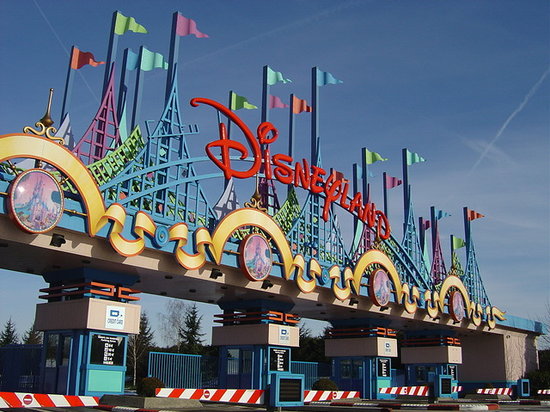Sunday, November 29, 2009
Rewarding Vs Prospecting
Thursday, November 26, 2009
Orange Facing Legislation To Cross Data Mining
Wednesday, November 25, 2009
Smartphones Sales Still Boosting Cell Phones Figures

Tuesday, November 24, 2009
LinkedIn Brings A Twitter Feature
Now LinkedIn already had great other features that have been added over the time. For example the question and answers feature was pretty nice, but still limited I believe. Now that you can post your Twitter feed on LinkedIn, it makes your resume/profile interractive, and shows out what you are at the moment.
Now there is still some other features that I miss on LinkedIn. Especially, all the features that are dealing with groups. At some point, I was developping the alumni association of my master at Dauphine. But compared to Viadeo's hub feature, where you can add up job proposition, creates forum or even have a calendar of event, LinkedIn has limited options.
Hence, I believe that LinkedIn should boost this part of their business to enable people to create great private business groups. But I believe it will be on soon...
Sunday, November 22, 2009
Video Counts For 27% Of Internet Use
While the overall video numbers are up, Sandvine reports that P2P usage is down to 20 percent of total Internet traffic, from 32 percent in 2008. Sandvine said that the amount of P2P usage is growing on an absolute basis, but VOD applications are growing faster. Sandvine looked at the bits per second, per protocol, along with how many active hosts per protocol on the network.
This dip in P2P echoes other recent reports from Cisco and Arbor Networks that show use of peer-to-peer file-sharing as a percentage of broadband usage is on the decline. In June of last year, Sandvine said that P2P traffic was hogging up bandwidth, generating 43.5 percent of Internet traffic, but that study was just of several, unnamed “leading” service providers, which could explain the discrepancy from the 32 percent number released today.
I believe that the Internet is going to pursue its revolution on how we consume videos. The very same way it changes the way we consume Newspapers, or more widely written news, and radio, with customizable content and podcasting, the revolution of video consumption is on.
Friday, November 20, 2009
Social Media Users' Profile Around The World
Forrester sets 6 profiles of social media users, depending on their level of use of the media:
- Consumers
- Creators
- Critics
- Collectors
- Joiners
- Spectators
- Inactives
Thursday, November 19, 2009
Brand Equity Worth Much More Than Anything


Tuesday, November 17, 2009
Zappos Aiming To More Personalization

Zappos.com, one of the hottest internet retailer, which masters the web 2.0 technology, has recently hired choicestream to empower their website with more personalization features. The goal is to enhance customer experience and ultimately raise the average sales per customer.
Monday, November 16, 2009
France: 60% des internautes adeptent du CtoC

le CtoC (customer to customer) est en train de devenir un axe majeur de la distribution en France. Ainsi, 60% des internautes ont soient achetés, soient vendus à un autre particulier. Cette statistique est fondamentale.
- Ainsi, la Fnac a commencer à développer une activité de vente de produits d'occasions.
- Wall Mart aux Etats-Unis a développé une plateforme de petites annonces gratuites pour ses utilisateurs.
- Dell est la première société à faire des bénéfices sur Twitter, en écoutant les demandes sur ce média social (ce qu'on appelle le VRM, le vendor relationship management ou la relation client inversée).
Friday, November 13, 2009
Statistics Is Not Everything
Thursday, November 12, 2009
Rupert Murdoch to Remove His Sites From Google
- No one owns a profitable news business on the Internet. Some influent bloggers or websites break even, or make little money, but no one makes actually profits. Murdoch admits that in overall, his constellation of newspapers website doesn't make a profit of their activities.
- There is not enough advertisers in the world to set up a business modell that would create profits out of a news website. Advertisers are not milk cows, and a lot of web 2.O companies have forgotten that point. You might generate millions of visits, it doesn't mean you'll have advertiPublish Postsers that could pay you enough to generate a profitable activity.
- Google brings you traffic, but it is not loyal readers that use Google to land on your pages. This is interesting on a customer relationship management point of view. Because they are occasional readers, there is little to expect in term of revenue generations, and hence, it is in Murdoch's mind impossible to create a business plan out of those occasional people. Actually, the newspaper industry thrived on people getting subscriptions. This customer base was securing the breaking even point of the companies. And now with the Internet it is difficult to forecast such a thing.
- On a weekly basis Google and Google news are the top traffic providers for WSJ.com account for over 25% of WSJ.com’s traffic.
- Over 44% of WSJ.com visitors coming from Google are “new” users who haven’t visited the domain in the last 30 days.
- Twitter and Facebook sent 4% of US visits to News and Media sites in October 2009. (via @Hitwise_US)
- The percentage of upstream traffic from Facebook and Twitter to News and Media sites is up 490% year-over-year.
Wednesday, November 11, 2009
First Moment Of Truth: In-store Marketing Beats Traditionnal Advertising


This post is linked to the one I have already written about the First Moment Of Truth. This topic is very important to me as I am working the retail industry. A new US study shows that "nearly a third (32 percent) third of the 999 shoppers polled online in March said in-store marketing is very effective. Only 27 percent said the same about ads living outside of the store."